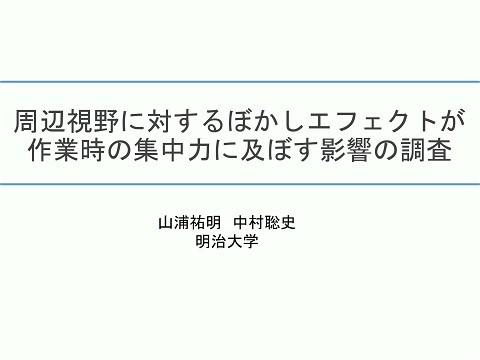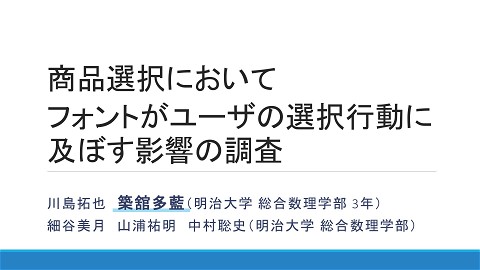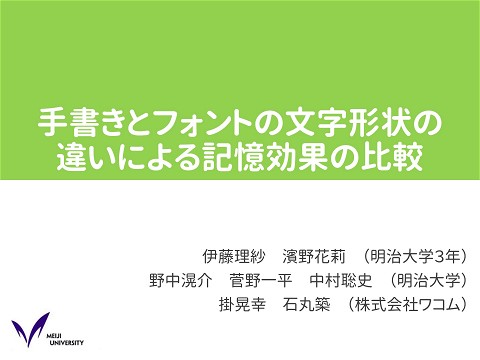Comparison of Speed-based and Position-based Auditory Feedback in Eccentric Strength Training
288 Views
July 21, 25
スライド概要
明治大学 総合数理学部 先端メディアサイエンス学科 中村聡史研究室
関連スライド
各ページのテキスト
Comparison of Speed-based and Position-based Auditory Feedback in Eccentric Strength Training Ryuto Oishi, Satoshi Nakamura Meiji University, Japan 1
Eccentric Training Eccentric training focuses on slowly lowering the weight. Recommended pace is 3 to 5 seconds for effective training. Movement speed tends to unintentionally increase as you repeat the training. 2
Eccentric Training Eccentric training focuses on slowly lowering the weight. Purpose Enabling users toRecommended maintain an appropriate movement pace is 3 to 5 secondsspeed for during eccentric effective training. training. Movement speed tends to unintentionally increase as you repeat the training. 3
Related Work Sonification method • Converts muscle activity, movement speed, and arm position into sound • Enhances movement rhythm and motivation. [Yang et. al 2013][Yang et. al 2015] Effectiveness under high-load conditions has not been fully examined. J. Yang and A. Hunt, “Sonic trainer: Real-time sonification of muscular activity and limb positions in general physical exercise,” in Proceedings of the 4th Interactive Sonification Workshop, Erlangen, Germany, December 2013. J. Yang and A. Hunt, “Real-time sonification of biceps curl exercise using muscular activity and kinematics,” in Proceedings of the 21st International Conference on Auditory Display, July 2015. 4
Proposed System Speed-based auditory feedback system Good Bad Good movement speed: Charging sound Bad movement speed: Power dissipation sound Auditory cues help users naturally control movement speed. 5
Experiment Experiment 1 No-feedback vs. Counting vs. Speed-based feedback (Proposed method) Experiment 2 Speed-based feedback vs. Position-based feedback 6
Experiment 1 Participants N = 10 Duration 3 sessions / 1.5 weeks (1 session per condition) Design Numerical Count (Baseline Comparison) Charging Sound (Proposed System) Within-subject 7
Experiment 1 – Results Eccentric phase duration Count, Our method < N=10 No-feedback 8
Experiment 2 Algorithm image Participants N = 21 Duration 6 sessions / 3 weeks (3 sessions per condition) Design Within-subject Position FB 9
Experiment 2 – Results Eccentric phase duration N=21 Variance of eccentric phase duration SpeedFB < PositionFB SpeedFB • Movements concentrated target range. PositionFB • Many movements exceeded 6 sec. 10
General Discussion SpeedFB • The charging sound feedback demonstrated performance comparable to or better than conventional counting and no feedback. • Maintains steady pace and keeps movement within target range. PositionFB • Encourages slower, more deliberate motion. Both feedback methods have complementary strengths 11
Limitation and Future Work Limitation • The long-term effects of the feedback were not investigated. • Most participants were untrained; effects on experienced trainees remain unclear. Future Work • Exploring a hybrid feedback strategy that combines the strengths of both methods. 12
Questionnaire (Motivation) Experimet 1 Do you want to do this training again? SpeedFB Numerical Count No-feedback 4.25 3.75 2.67 Experimet 2 Do you want to do this training again? SpeedFB PositionFB 4.39 4.33 13





